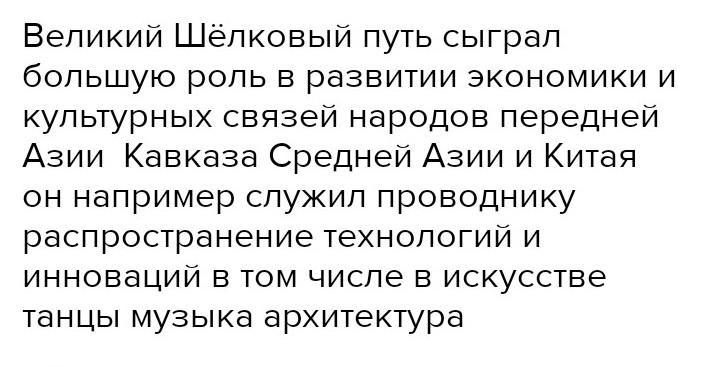Предмет: История,
автор: dinara2167
s 22. Роль Великого Шелкового пути в развитии международных отношений, экономики и культуры На этом занятии: Выясним роль Великого Шелкового пути в развитии международных отношени ознакомимся с основными направлениями международных дорог Великого Ше кового пути. Торговый путь под названием Великий Ключевые слова Шелковый путь, сыгравший огромную роль в истории человечества, формировался посте- • Шелковый путь пенно. Тропы, проложенные между городами, постепенно стали торговыми караванными • торговля Лазуритовый г путями. На основе этого появились главные направления Великого Шелкового пути, свя- Нефритовый г зывавшего множество стран. Шелковый путь в середине II в. до н. э. открыл Чжан Ця вившийся в путешествие в западные страны по заданию и
эссе пж
Ответы
Автор ответа:
0
Ответ:
надеюсь помогала
Объяснение:
поставь лучший ответ если правильно )
Приложения:

Похожие вопросы
Предмет: Русский язык,
автор: Аноним
Предмет: Другие предметы,
автор: datzics
Предмет: Русский язык,
автор: aysukarabas
Предмет: Английский язык,
автор: andreyevans20
Предмет: Математика,
автор: heeeelpping